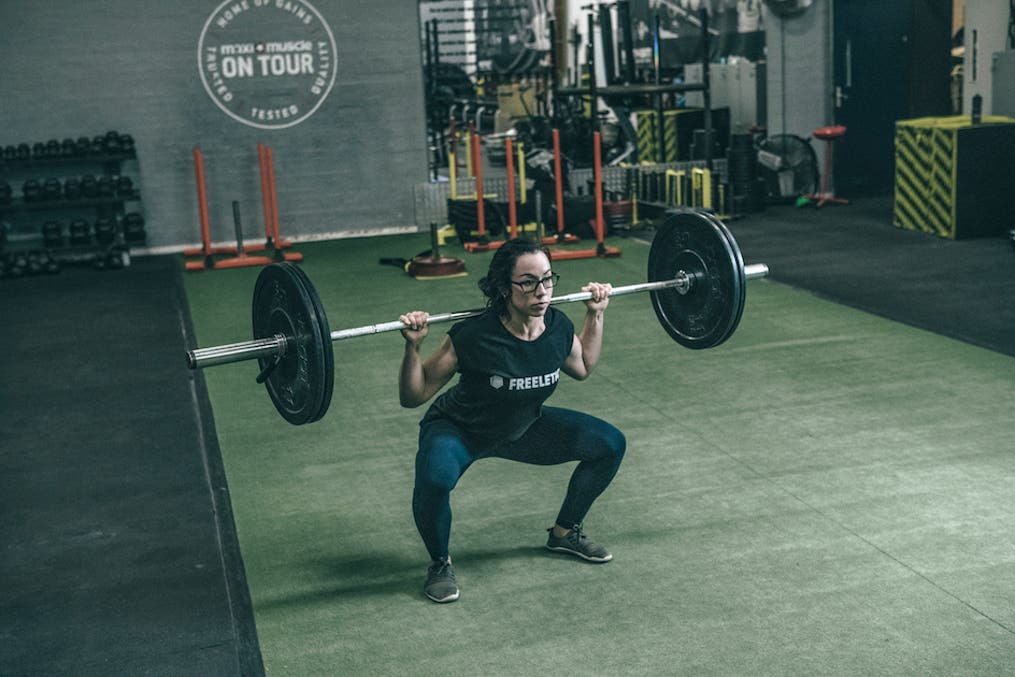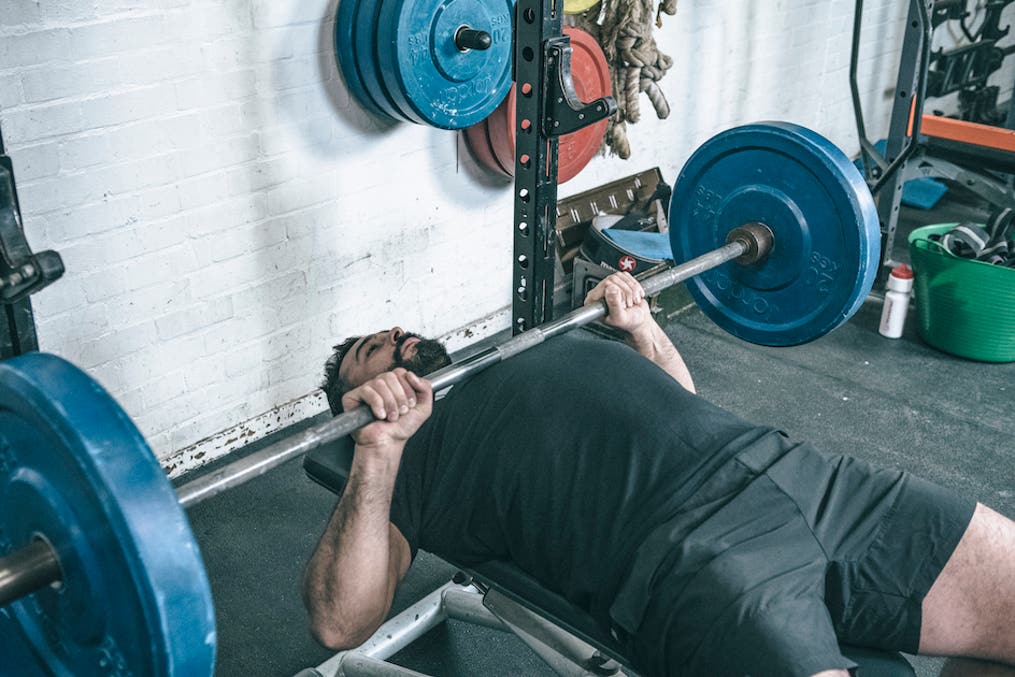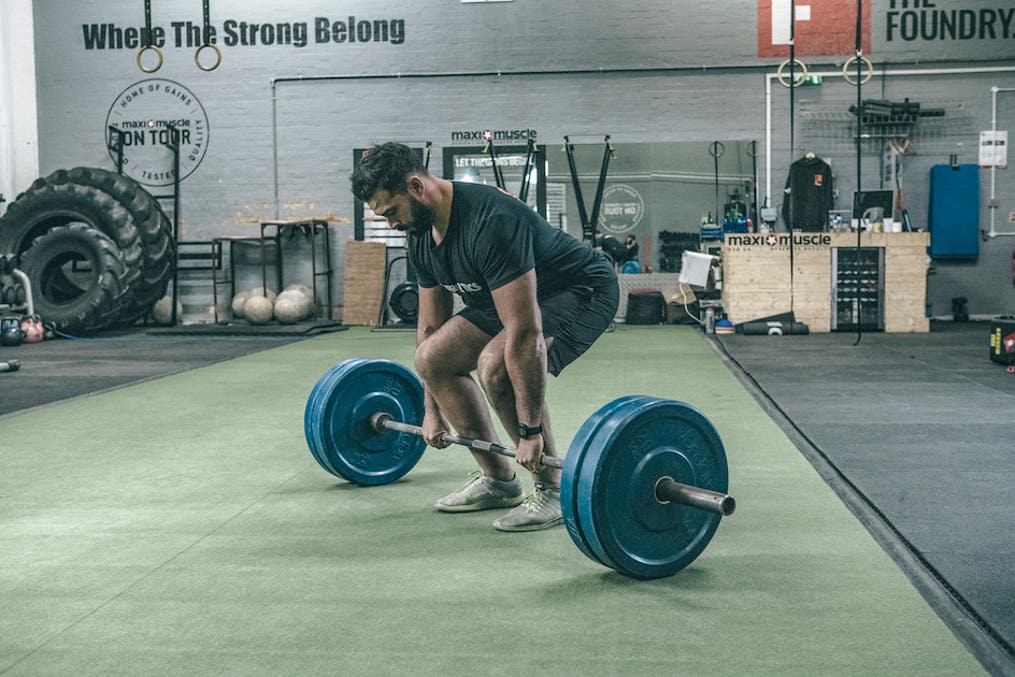Freeletics is going back to the core of Strength training: The “Big 3” come from the sport of powerlifting. Powerlifters are some of the strongest and most muscular people on earth. They train and test their strength in 3 basic movements: the squat, the bench press and the deadlift. Not everyone has to go quite as extreme with the weight as powerlifters, but these movements do offer unique benefits if done properly. In our Barbell Strength, Barbell Tone and Hybrid Strength Training Journeys we use the big 3 exercises to build muscle, improve body composition and increase strength. Here’s why:
Compound exercises build more muscle
Compound exercises build more muscle, because you use more muscles. Gyms are crowded with machines that isolate one muscle in the body. They have their time and place, but should not be the majority of your training if your goal is to build muscle and gain strength. Rather than just isolating one muscle, compound exercises require multiple muscle groups to work together therefore forcing them to grow larger and stronger.
Compound exercises offer you the most results for your time invested in the gym. Instead of spending 60 minutes training every muscle independently, you can train almost every muscle in the human body at the same time with just 3 exercises.
The “Big 3” are all compound exercises. They involve multiple joints to move in sync and train the biggest muscle groups of the upper and lower body. One of these exercises even trains the entire body. Let’s look at each one in detail.
Squats mold quads

The powerlifter approaches the platform. A barbell is suspended in mid-air. Weight plates are put onto the bar that add up to hundreds of pounds. The lifter ducks under the bar and places it on his shoulders. He unracks the weight and that’s when the safety pins are removed. Multiple people gather around him to catch the weight incase he fails. The competitor takes a big breath into his belly to tighten his core. He creates tension in his hips and ankles to drive his knees out. He sits back while keeping his spine neutral. He lowers his hips past his knees to reach the required depth. He then pushes the floor away to come back to a standing position. He re-racks the weight and celebrates a successful back squat.
The back squat is a lower body strength exercise. It trains your quads, hamstrings, glutes, calves and core and is probably the most effective mass builder for the four muscles on the front of your thighs. Powerlifters obviously squat insane amounts of weight that we shouldn’t even dare to attempt. A variation of the squat - whether that be a back or a front-loaded squat - should be in everyone’s training plan though, if the goal is hypertrophy and strength development.
A common misconception is that the knee should not come over the toes. If your mobility allows you to do this controlled, then it is perfectly fine. The knees can track forward, even past your toes. You will not only see a powerlifter do this, but think about all the daily activities that require your knee to exceed your toes. Taking a flight of stairs, sitting down on a chair or going downhill would all be impossible, if pushing the knees forward were too dangerous.
Now having a heavy barbell on your back does require a great deal of technique and safety precautions. That’s why you should aim for a straight and neutral spine while simultaneously driving the knees out during a squat.
Bench press for big pecs

The powerlifter has completed 3 attempts at the back squat. He now prepares for the second test of strength. Again, a heavy barbell is prepared as he proceeds towards a bench. He lays down, grabs the bar and arches his back. He pins his shoulder blades back and down to make them stick on the bench. 3 people gather around the bench as he gets his liftoff. He again takes a deep breath. He tries to bend the bar with his hands to create even more stability in his shoulder. He lowers the weight slowly until it touches his chest. He pauses there until the referee yells “press”. He then pushes the weight off his chest to complete the lift.
The bench press is a mass builder for the chest, deltoids and triceps. If done correctly, then your lats (the big back muscle) even get a good workout. The bench press is an upper body push movement, that requires you to keep your shoulder blades and upper back in a stable position, while only moving from the shoulder joint and elbows.
You especially see high-level powerlifters do the bench press with an arched back. In fact, they use this to put their shoulders in a more stable position. Make sure, that you only arch from your upper back and not from the lower area of your spine. This is called thoracic extension and is a key factor in lifting heavy weights while keeping your shoulders stable.
The biggest danger while bench pressing is failure. In every competition, you will see multiple spotters. A spotter is someone who stands behind the bench, that can pick the bar up and re-rack it, once you reach a point of failure. If the weight is heavy and you are uncertain whether you will be able to lift it for the desired amount of reps, then ask a friend or someone else in the gym to spot you.
Ladies and gentlemen, the king of all exercises: the deadlift

The powerlifter steps on the platform once again for the last exercise. A barbell lays on the ground. Multiple weight plates are racked on each side of the bar. The competitor steps in front of the barbell, so that it almost touches his shins. He bends over with a neutral and straight spine by pushing his hips back. He grips the bar and tries to break it with his hands. He creates a massive amount of tension in his core, shoulders and back well before the weight even leaves the ground. He then picks it up - keeping his back and neck straight - holds it at the top and brings it back to the floor in one controlled movement.
The deadlift is a hip-leading exercise that trains everything from the calves, quads, hamstrings, glutes and all the way up to the back, lats, traps, biceps and forearms. It is probably the single most effective exercise for full body muscle gain and strength development.
Are deadlifts bad for your back? We would all agree that something as heavy as a 1.000 pounds could propose a danger for your lower back. If done with the correct technique then the deadlift is actually good for your back. The correct technique is something that we call a “hip-hinge”. It requires you to move your hips back - only slightly bending your knees - while keeping your back straight. This movement requires a great deal of coordination and mobility in your hips. If you master the hip-hinge, then deadlifts will be as safe as it gets.
Gaining strength while staying healthy
Powerlifters are often plagued by injuries and pain. They obviously have taken these compound lifts to the extreme. If however we use these exercises in a safe environment, then we can reap their muscle and strength building benefits, while bulletproofing our body against injuries. Expect to see big improvements on strength and body composition when you are on your weights Training Journey.